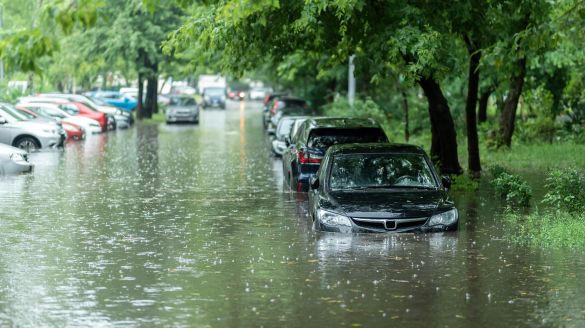News
Reinsurance Solutions Intermediary Services is growing all the time.
Take a look through our news articles for more on our latest client wins, new products and services, and exactly how we're helping Southern African insurance firms meet their customer obligations.
News | Increasing natural disasters necessitates new approach to CAT cover
Increasing natural disasters necessitates new approach to CAT cover
August 01 2022 By Medgee Ithier medgee ithier, natural catastrophes, reinsurance, insurance

Incidences of natural catastrophes the world over are increasing year on year. One catastrophic modelling company predicts that catastrophe losses will double every decade. This is forcing insurers and reinsurers to relook at the way they model and underwrite these risks.
Natural catastrophes are large-scale geological or meteorological events that have the potential to cause loss of life as well as damage to infrastructure and property. Natural disasters include tornadoes and severe storms; hurricanes and tropical storms; floods; wildfires; earthquakes and tsunamis; and drought.
Some disasters are more prevalent in certain countries than others, given their geographical location in relation to the planet's weather systems and streams.
The United States, for instance, has the most - and the strongest and most violent - tornadoes of any country, while Cuba, Madagascar, Vietnam, Taiwan, Australia, the US, Mexico, Japan, the Philippines and China receive the most hurricanes. The most widespread natural disaster in Africa is flooding, which represents 60% of all reported natural disasters recorded in recent decades.
Over the past 20 years, from 1997 to 2016, the disasters making up the total catastrophe insured losses were tornadoes, hail and flood losses associated with tornadoes (39.9%); hurricanes and tropical storms (38.2%); and wind/hail (7%) and floods (6.7%) as related to winter storms.
These catastrophes destroy assets worth billions of dollars each year, displacing people and disrupting, even devastating, local economies. The effects of some natural disasters are felt for years to come. More than 15 years after Hurricane Katrina made landfall, New Orleans has still not fully recovered from the category 5 hurricane, which was rated the largest and third strongest recorded hurricane to hit the US.
Proper catastrophe insurance can make a significant contribution to reducing financial vulnerability and supporting economic recovery. However, given the complexity of these different events, the traditional criteria for an insurable risk is often exacerbated.
Statistics have shown that although various catastrophe pricing models differ across countries and markets, the share of uninsured items may be as high as 60% for natural catastrophes. A changing climate, urbanisation, digitalisation, globalisation and other economic, social and environmental trends are likely to increase the frequency and/or severity of catastrophe events in the future. These are expected to exacerbate the current challenges to achieving broad levels of financial protection against catastrophe losses through insurance.
Catastrophe risk insurance programmes have been established in many countries to address some of the insurability challenges presented by catastrophe perils, particularly natural catastrophes. These programmes involve sharing the losses across insurance, reinsurance or in some countries, with the government. For such programmes to enjoy any measure of success, the insurance and reinsurance industries need access to in-depth knowledge of these risks, as well as insurance solutions that have been specifically designed for these risks and the factors that influence them.
While underwriters ensure that risk analyses reflect the latest scientific findings and form the basis of their risk models, increasing uncertainty around the world - especially after the pandemic - is complicating this task.
Escalating perils from natural catastrophes are combining with shifting market dynamics to create a complex environment for risk managers. Insurance prices are rising, while the scope of cover being offered is often diminishing.
It is against this backdrop that the industry is seeing a growing interest and uptake of parametric products alongside traditional insurance packages.
Parametric is the ability to immediately respond to natural disasters and/or weather-related losses, and mitigate as many detrimental knock-on effects as possible, helping businesses and communities quickly return to normal.
Parametric products provide a simple, transparent coverage concept for insurers, businesses and the public. They complement traditional insurance coverage for policyholders aiming to reduce their risk exposures and can even cover risks that have traditionally been uninsurable.
These products typically contain a pre-agreed, simple measure, where an independent third party determines the intensity of the event and hence the impact on the claim, and pay-outs depend on the occurrence of a triggering event, regardless of the actual loss. Pay-outs on parametric products seldom equal the financial loss of an insured.
Huge advances in technology and data collection are making parametric insurance more attractive than ever. High-quality, granular data allows for more accurate event tracking, and is helping to improve the industry's understanding of perils. This makes pricing risk more possible and the case for mitigation measures, much clearer.
Examples of this include Swiss Re using drones to capture highly accurate, location-specific elevation data that can be transformed into a visualisation of a facility to gauge potential flood vulnerabilities and predict flood-related damage.
Similarly, FLOW is the firm's index-based water-level insurance aimed at companies exposed to river levels in Europe. Clients pay a premium based on their individual exposure to water level fluctuations and receive a pre-agreed pay-out when threshold levels are passed.
Looking ahead, the growth of urban populations combined with climate change are likely to contribute to increased catastrophe claims costs. Re/insurers will need to re-evaluate the climate-related risk they carry in their portfolios, and underwriters will need to take a fresh approach to those risks, demonstrating flexibility and innovation.